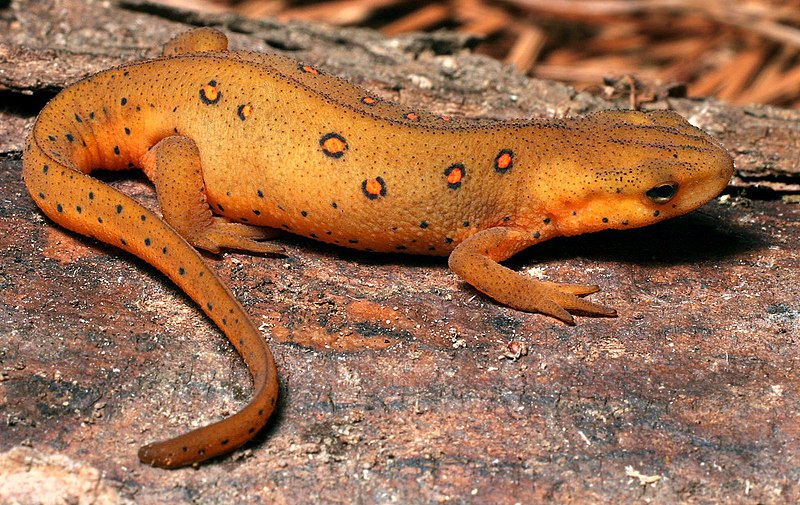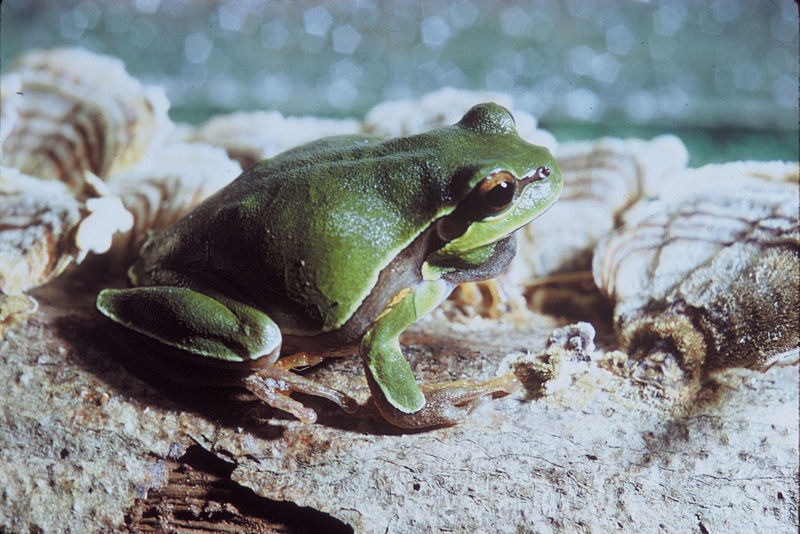 Many frogs and toads that are collected or purchased and kept as pets will greedily accept crickets and mealworms, the food items most easily obtained from pet stores. Most thrive on this fare for a time, but eventually develop nutritional disorders and expire long before they have reached their potential life-span. Following are some useful tips for those keeping American Bullfrogs, White’s Treefrogs, Budgett’s Frogs, most Toads and similar species. Please see my other Amphibian Care Articles for information on feeding Poison Frogs, Mantellas, African Clawed Frogs, Horned Frogs and others requiring specialized diets, or write in with your questions. Read More »
Many frogs and toads that are collected or purchased and kept as pets will greedily accept crickets and mealworms, the food items most easily obtained from pet stores. Most thrive on this fare for a time, but eventually develop nutritional disorders and expire long before they have reached their potential life-span. Following are some useful tips for those keeping American Bullfrogs, White’s Treefrogs, Budgett’s Frogs, most Toads and similar species. Please see my other Amphibian Care Articles for information on feeding Poison Frogs, Mantellas, African Clawed Frogs, Horned Frogs and others requiring specialized diets, or write in with your questions. Read More »
Category Archives: Amphibians
Feed SubscriptionThe Eastern Newt – the Many Subspecies and Hybrids of a Poplar Pet – Part 1
 The Eastern Newt (Notophthalmus viridescens) is, in most parts of the USA, the salamander most likely to be encountered in either the wild or in pet stores. It is a wonderful species for beginning hobbyists, yet has such a complicated life style that even long-experienced herpetologists remain interested in keeping them.
The Eastern Newt (Notophthalmus viridescens) is, in most parts of the USA, the salamander most likely to be encountered in either the wild or in pet stores. It is a wonderful species for beginning hobbyists, yet has such a complicated life style that even long-experienced herpetologists remain interested in keeping them.
Many unusual hybrids, varying color phases and related species have found their way into captivity. Today I’ll touch on their care and feeding; I’ll discuss some of the many types available in Part 2. Read More »
Conservation Update – The Bizarre, Skin-Breathing Lake Titicaca Frog
The huge, aquatic, baggy-skinned Lake Titicaca Frog (Telmatobius culeus) has fascinated me since childhood, when I first came upon a group at the Bronx Zoo. I returned again and again to stare as the unusual beasts – largest of the world’s aquatic frogs – did “push-ups” at the bottom of their cold aquarium (they breathe largely through their loose skin, and rock back and forth in order to increase the area exposed to the water). Because the frogs lived for so long – nearly 30 years in one case – I was able to work with same individuals I had earlier observed once I began my zoo-keeping career. Read More »
Pet Industry Responds to Amphibian Crisis and Proposed Trade Restrictions
 In terms of the number of species and countries affected, Batrachochytrium dendrobatidis (“Chytrid fungus” or Bd, for short) is the most devastating wildlife disease ever identified. It is currently sweeping through frog and salamander populations worldwide, and is responsible for the decline or extinction of at least 250 species!
In terms of the number of species and countries affected, Batrachochytrium dendrobatidis (“Chytrid fungus” or Bd, for short) is the most devastating wildlife disease ever identified. It is currently sweeping through frog and salamander populations worldwide, and is responsible for the decline or extinction of at least 250 species!
Your Comments Needed
Concerns that the transportation of live frogs, salamanders and frog legs is aiding the spread of both Bd and another deadly disease, Ranavirus (please see the article below), prompted the US federal government to propose new regulations that could limit the trade in most amphibians.
Notice of these regulations is now posted in the Federal Register. Interested persons and organizations, both professional and amateur, are invited to comment. Commenting is easy…simply click here and you will be taken to a form that can be used to register your opinions.
The comment period closes on Thursday, December 16, 2010.
The Pet Industry Weighs-In

PIJAC representatives also attended a major conference on the subject, and are now involved in cooperative programs with over 200 zoos, aquariums, private amphibian keepers, government agencies and universities. You can read more about theses efforts here.
Bd and its fallout is the most important issue facing amphibians and those who care about their future. Please, make no mistake, this is a full-blown crisis. Please consider reading the following articles and becoming involved…I’ll be happy to assist in any way possible.
Further Reading
US Government Seeks Comments on Amphibian Trade Restrictions
Disease and Amphibians in the Fish Bait Trade
Successful Bd Treatments
Amphibian Ark Bd Update on the federal proposal
Edible Frog in Estonia image referenced from wikipedia and originally posted by Elina Annusver
Preparing Your Amphibian and Reptile Collection for Autumn and Winter
 Autumn’s arrival in the Northern Hemisphere brings both opportunities for improving your pets’ health and behavioral changes in many animals.
Autumn’s arrival in the Northern Hemisphere brings both opportunities for improving your pets’ health and behavioral changes in many animals.
Seasonal Behavioral Changes
Many species, even those from regions considered “tropical”, slow down during the cooler seasons; in captivity they often respond to autumn’s arrival in a similar manner. Animals that are native to your area will be most strongly affected, especially if exposed to the local light cycle, but even exotic species may gear their behavior to local conditions. Read More »
 That Reptile Blog – Reptile, Amphibian and Exotic Pet Care and Information
That Reptile Blog – Reptile, Amphibian and Exotic Pet Care and Information
